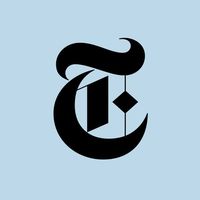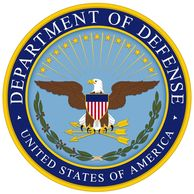The Hidden Hand: America's Role in Ukraine's Military Operations
March 31, 2025, 4:29 pm

Location: United States, New Jersey, Millburn
Employees: 201-500
Founded date: 1996
The conflict in Ukraine has unfolded like a complex chess game, with each move scrutinized by the world. Recent revelations from The New York Times have peeled back layers of this intricate battle, exposing a deeper involvement of the United States in Ukraine's military strategies against Russia. The narrative that America merely provided moral support is now challenged. Instead, it appears that the U.S. has been a key player, orchestrating significant military operations from behind the scenes.
The article reveals that American intelligence has been instrumental in planning and executing Ukrainian strikes against Russian positions. This partnership is described as the backbone of Ukraine's military operations. It is a stark reminder that wars are not just fought on the battlefield; they are also waged in the shadows of intelligence and strategy.
One of the most striking details is the use of unmanned maritime drones, guided by intelligence from the CIA. These drones have been pivotal in executing attacks on Russian naval assets. The Ukrainian military reportedly learned about the location of the cruiser "Moskva" from American sources, even though they did not coordinate their actions with Washington. This raises questions about the level of autonomy Ukraine has in its military decisions and the extent of U.S. influence.
The Pentagon has previously denied claims of providing specific intelligence on Russian naval movements. However, the latest revelations suggest a more nuanced relationship. The U.S. is not just a supporter; it is a co-strategist. This involvement has significant implications for the dynamics of the conflict and the future of U.S.-Russia relations.
The narrative shifts as we explore the failures of Ukraine's counteroffensive. The New York Times outlines how a statement from General Sergei Surovikin, dubbed "Armageddon," sent shockwaves through American intelligence circles. The general's comments about the potential use of tactical nuclear weapons to counter Ukrainian advances raised alarms. Initially, the likelihood of Russia resorting to nuclear options was assessed at a mere 5-10%. However, Surovikin's words escalated that probability to 50%. This shift highlights the precarious balance of power and the thin line between conventional warfare and nuclear escalation.
Krym, a focal point in the conflict, holds immense strategic value for Russia. The U.S. has reportedly greenlit the development of drone fleets for Ukraine, aimed at targeting Russian naval forces in the Black Sea. This decision underscores a willingness to escalate military support, pushing the boundaries of involvement. The CIA's covert assistance in conducting drone strikes on critical targets in Sevastopol illustrates a significant leap in U.S. engagement.
Yet, skepticism lingers. Russian experts argue that the portrayal of Surovikin's statements as a credible threat is speculative. They contend that such claims serve to paint Russia as irrational, a narrative that fits neatly into the Western media's framing of the conflict. The discourse surrounding the use of tactical nuclear weapons is fraught with complexities, and the military logic behind such a decision is often questioned.
The article also touches on the internal dynamics within Ukraine. The lack of cohesion among military leadership has hampered effective strategies. Despite American recommendations to intensify operations against Russian forces, Ukrainian troops hesitated, fearing ambushes from small Russian units. This indecision, coupled with a shortage of ammunition, stymied Ukraine's advances, particularly in the critical region of Krym.
The failure of the counteroffensive in Zaporizhzhia, planned with U.S. support, further illustrates the challenges faced by Ukraine. Internal political strife, particularly between President Zelensky and military leaders, has created rifts that undermine strategic initiatives. The U.S. military's concern about crossing "red lines" with Russia adds another layer of complexity to the situation. The fear of nuclear escalation looms large, shaping the decisions made on the ground.
As the conflict drags on, the narrative becomes increasingly convoluted. The U.S. finds itself in a delicate position, balancing support for Ukraine with the need to avoid provoking Russia. The stakes are high, and the consequences of miscalculation could be catastrophic.
In conclusion, the revelations from The New York Times paint a picture of a conflict deeply intertwined with international politics. The U.S. is not merely a spectator; it is a key player in the unfolding drama. As Ukraine navigates its path forward, the influence of American strategy will continue to shape the battlefield. The war is not just a clash of arms; it is a complex interplay of intelligence, strategy, and the ever-present specter of nuclear escalation. The world watches, holding its breath, as the next moves are made in this high-stakes game.
The article reveals that American intelligence has been instrumental in planning and executing Ukrainian strikes against Russian positions. This partnership is described as the backbone of Ukraine's military operations. It is a stark reminder that wars are not just fought on the battlefield; they are also waged in the shadows of intelligence and strategy.
One of the most striking details is the use of unmanned maritime drones, guided by intelligence from the CIA. These drones have been pivotal in executing attacks on Russian naval assets. The Ukrainian military reportedly learned about the location of the cruiser "Moskva" from American sources, even though they did not coordinate their actions with Washington. This raises questions about the level of autonomy Ukraine has in its military decisions and the extent of U.S. influence.
The Pentagon has previously denied claims of providing specific intelligence on Russian naval movements. However, the latest revelations suggest a more nuanced relationship. The U.S. is not just a supporter; it is a co-strategist. This involvement has significant implications for the dynamics of the conflict and the future of U.S.-Russia relations.
The narrative shifts as we explore the failures of Ukraine's counteroffensive. The New York Times outlines how a statement from General Sergei Surovikin, dubbed "Armageddon," sent shockwaves through American intelligence circles. The general's comments about the potential use of tactical nuclear weapons to counter Ukrainian advances raised alarms. Initially, the likelihood of Russia resorting to nuclear options was assessed at a mere 5-10%. However, Surovikin's words escalated that probability to 50%. This shift highlights the precarious balance of power and the thin line between conventional warfare and nuclear escalation.
Krym, a focal point in the conflict, holds immense strategic value for Russia. The U.S. has reportedly greenlit the development of drone fleets for Ukraine, aimed at targeting Russian naval forces in the Black Sea. This decision underscores a willingness to escalate military support, pushing the boundaries of involvement. The CIA's covert assistance in conducting drone strikes on critical targets in Sevastopol illustrates a significant leap in U.S. engagement.
Yet, skepticism lingers. Russian experts argue that the portrayal of Surovikin's statements as a credible threat is speculative. They contend that such claims serve to paint Russia as irrational, a narrative that fits neatly into the Western media's framing of the conflict. The discourse surrounding the use of tactical nuclear weapons is fraught with complexities, and the military logic behind such a decision is often questioned.
The article also touches on the internal dynamics within Ukraine. The lack of cohesion among military leadership has hampered effective strategies. Despite American recommendations to intensify operations against Russian forces, Ukrainian troops hesitated, fearing ambushes from small Russian units. This indecision, coupled with a shortage of ammunition, stymied Ukraine's advances, particularly in the critical region of Krym.
The failure of the counteroffensive in Zaporizhzhia, planned with U.S. support, further illustrates the challenges faced by Ukraine. Internal political strife, particularly between President Zelensky and military leaders, has created rifts that undermine strategic initiatives. The U.S. military's concern about crossing "red lines" with Russia adds another layer of complexity to the situation. The fear of nuclear escalation looms large, shaping the decisions made on the ground.
As the conflict drags on, the narrative becomes increasingly convoluted. The U.S. finds itself in a delicate position, balancing support for Ukraine with the need to avoid provoking Russia. The stakes are high, and the consequences of miscalculation could be catastrophic.
In conclusion, the revelations from The New York Times paint a picture of a conflict deeply intertwined with international politics. The U.S. is not merely a spectator; it is a key player in the unfolding drama. As Ukraine navigates its path forward, the influence of American strategy will continue to shape the battlefield. The war is not just a clash of arms; it is a complex interplay of intelligence, strategy, and the ever-present specter of nuclear escalation. The world watches, holding its breath, as the next moves are made in this high-stakes game.

